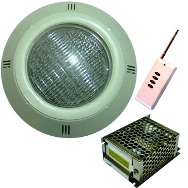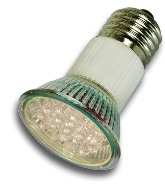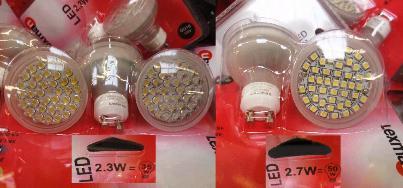Categories: Controversial issues, Interesting electrical news, Sources of light
Number of views: 512374
Comments on the article: 59
The real advantages and disadvantages of LED lamps, identified experimentally
We are living in an era of unbridled and unscrupulous growth in electric tariffs, and while Chubais’s thinking will dominate the economy, the situation will not change.
For example, we can recall that over 10 years, electricity tariffs have increased 20 times. Apparently, this is not the limit. The only way to counter, with the exception of theft, is energy saving.
A couple of years ago, everyone was hearing "energy-saving lamps, i.e. conventional luminescent, only with an electronic starting and adjustment device and with the common base E14 and E27 in everyday life. Thus, they were all familiar fluorescent lights, only in a new form factor. By the way, China produces them every year in an amount of more than 3 million pieces!
A lot has been written about these lamps, all their advantages and disadvantages are “sucked”.
The calculations of efficiency and payback are given. With regard to their veracity, there are different, sometimes polar opinions. Now it's time to discuss LED downlights and lamps.
 Consider first advantages of led bulbs. According to the Hamburg account, there are only two of them: firstly, power consumption is 10 times less than that of incandescent lamps and 3 times less than that of fluorescent lamps; secondly, the service life of about 100,000 hours or 11 years of continuous operation. There are still advantages - this is their relative harmlessness, i.e. lack of mercury and easy disposal. However, this does not affect the reduction of power consumption, and in addition to mercury, there are other metals that manufacturers are silent about.
Consider first advantages of led bulbs. According to the Hamburg account, there are only two of them: firstly, power consumption is 10 times less than that of incandescent lamps and 3 times less than that of fluorescent lamps; secondly, the service life of about 100,000 hours or 11 years of continuous operation. There are still advantages - this is their relative harmlessness, i.e. lack of mercury and easy disposal. However, this does not affect the reduction of power consumption, and in addition to mercury, there are other metals that manufacturers are silent about.
Now about disadvantages of LED lampswhich are many. The most significant drawback of this type of lamp is its very high price. For example, "home" LED lamps from 4 to 9 W cost from 300 to 2000 rubles. LED lights in common office ceilings such as Armstrong cost from 5500 rubles. Similar luminaires with 4 fluorescent lamps of 18 W each cost from 700 rubles. And these are only the minimum prices in domestic stores.
Consider other shortcomings or debunked advantages of LED lamps. Practice shows that a period of 100,000 hours lies in pure water. The manufacturer himself gives a guarantee for a period of 3-5 years, and not at all for 11! The fact is that there is a phenomenon of degradation, i.e. silent dying crystals of LEDs. At first they lose brightness, then they go out completely. Given that the payback period of LED lights is at least 5 years, you can lose your money.
 The second disadvantage of LED lamps is the unpleasant spectrum of the glow. According to psychologists, more than 80% of respondents negatively comment on the use of such lamps at home. The third drawback is that LEDs give very directional light. You may need more of these lamps to get familiar lighting.
The second disadvantage of LED lamps is the unpleasant spectrum of the glow. According to psychologists, more than 80% of respondents negatively comment on the use of such lamps at home. The third drawback is that LEDs give very directional light. You may need more of these lamps to get familiar lighting.
The third drawback follows from the second. In St. Petersburg, they tried to use LED lights on the railway. Illumination turned out to be “zebra-like”, i.e. stripes. Engineers could not work normally, injuries increased. Of course, you can use leveling matte filters or Fresnel lenses, but this reduces the luminous flux.
The fourth disadvantage of LED lamps is that for the stable and durable operation of these lamps you need to use very expensive power supplies and cooling systems. Without these devices, LEDs quickly degrade. Power supplies are used pulsed, because in our electric networks, large voltage drops, incompatible even with GOST, sources often fail!
The fifth drawback is that energy companies and the state are only verbally interested in energy conservation, because it reduces profits.There are no real benefits, all the difficulties and expenses will fall on your shoulders. That is why after the ban of 100 watts of incandescent bulbs, factories mass-produced, and people buy boxes of cheap bulbs with a marking of 95 watts. Now you are warned, and therefore armed. All in your hands!
30.04.2011
See also: Comparison of power and light output of paws of various types (data for 2016)
Recent articles:
How LED lamps affect human health
How to choose the right LED lamp with all the parameters
Features of the installation of LED lamps in the suspended ceiling
LED lamp
See also at bgv.electricianexp.com
:


